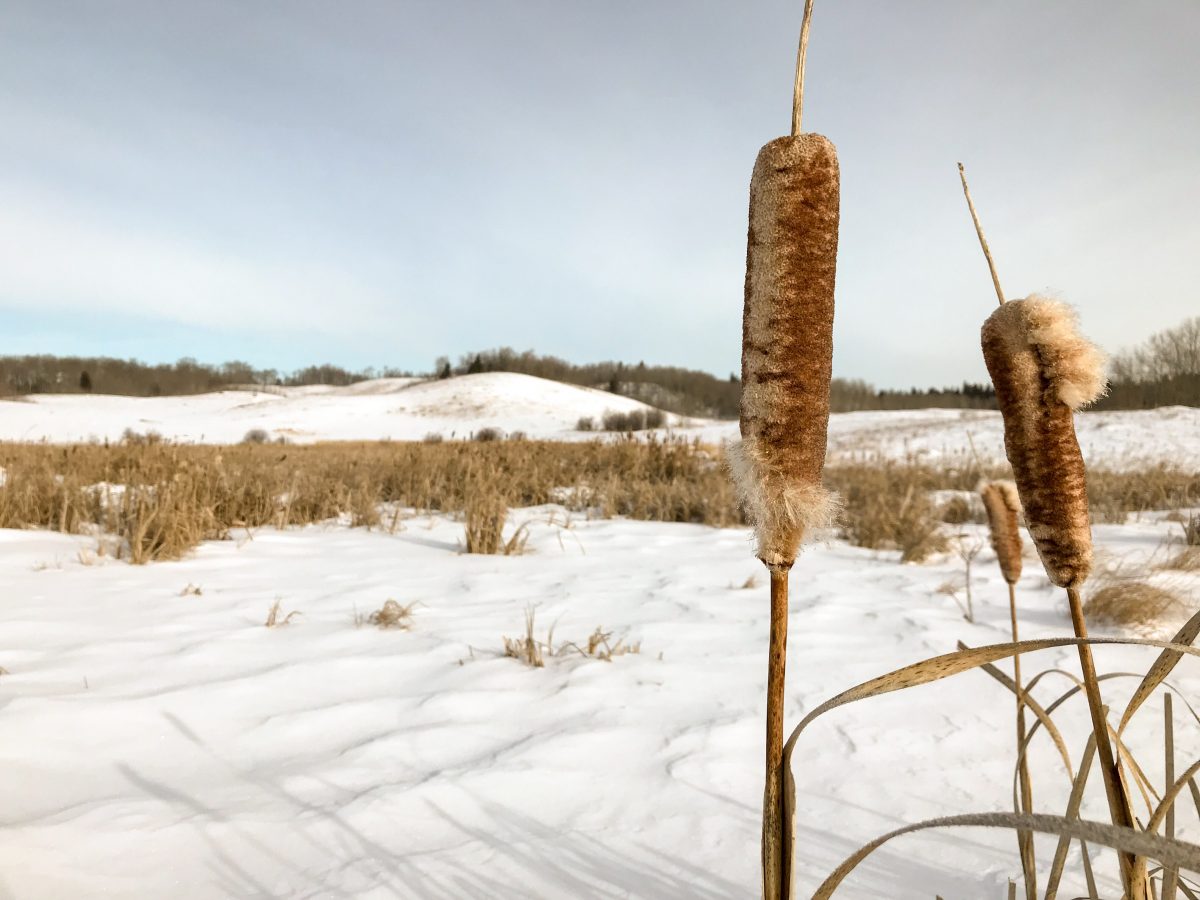Pond Repair
How Ducks Unlimited Canada restores wetlands.

It’s -18 C, but feels like -23 C in the wind. The snow, knee deep in places, makes walking an exhausting slog. The cold nips at fingers and toes, even through gloves and boots.
But Katrina Clark , a Conservation Programs Specialist with DUC who is based in Brandon, has work to do. And, she’s not about to let the deep freeze spoil the beauty of this secluded spot south of Riding Mountain National Park.
“Isn’t it nice back in here? I love it,” Clark says, looking out across snow-blanketed hills dotted with tufts of grass and thickets.

Clark – already wearing coveralls and a sweater – slips on boots, a balaclava, gloves and a helmet.
Now ready for the cold, she tugs the cord of a snowmobile and its sputtering growl breaks the silence of the countryside.
The snow is too deep for her truck, so she’ll have to ride more than two kilometres to the site where three drained ponds will be restored.
Southwestern Manitoba has lost up to 70 per cent of its wetlands. From the air, scars of former ponds and sloughs can be seen connected by the network of ditches used to drain them to make way for crops.
Besides providing wildlife habitat, wetlands clean water, temper flood and drought, recharge groundwater, supply a water source for livestock, and reduce nutrient runoff (such as phosphorous, and nitrogen).
Many conscientious farmers, ranchers and other landowners have restored wetlands through DUC incentive programs. In the last year alone, DUC Manitoba has partnered with 16 landowners and conservation groups to restore 134 individual pothole wetlands.

The project south of Riding Mountain park is one example. A backhoe will build earthen “plugs” to block the ditches that were used to drain the ponds. Come spring and summer, they’ll fill with runoff from rain and snow.
Before the backhoe can work though, Clark surveys the area to ensure that the plug – a small dike – is built in the right spot so water remains where it’s supposed to. Plugs are small, so if the wetlands overflow they spill around them.
“We don’t want to just build crazy, deep wetlands,” Clark says. “We want to hold them to what they were before.”
Once the surveying is done, the backhoe digs into the wetland basin and removes clay to build the water-resistant plug. It then fills in the hole, and spreads topsoil on the dike. The area is seeded with grass, and the backhoe adds a thin layer of snow on top to protect the seeds from the wind.
Clark doesn’t usually restore wetlands in winter. When there’s a problem, it’s usually because conditions are too wet for heavy machinery to work and her truck gets stuck.
Winter poses its own challenges as Clark’s legs have to plough through snow, and it takes the backhoe a little longer to dig through frozen topsoil to reach the clay needed for the plug.
But the rebuilding of these particular wetlands has been delayed by wet weather before and can’t be postponed further by frost. Sometimes, the work just needs to get done.
Clark is up for the challenge, smiling as frost-covered curls poke from underneath her balaclava.
“Definitely not your typical work day,” Clark says. “I like working outside, even on cold days like today, it just gives a little bit of something different to my job.”
Plus, she finds her wetland restoration work rewarding.
“It’s nice to see things go back to what they should be, since these never should have been drained in the first place.”



